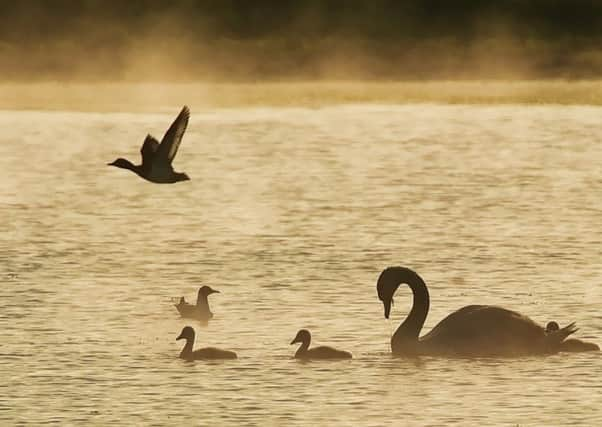Northumberland, Bird Club


It takes real skill to bring a birding trip full of unfamiliar species to life, but Tom has the knack of combining his passion for birds and his fascination with their family connections and quirky hyphenated-names, such as plain-mantled tit-spinetail, with a good sense of timing as he builds up to the next ‘mega star’ bird, keeping his audience engaged.
Chile stretches along the western coast of South America for 2,500 miles, a narrow ribbon of land never more than 150 miles wide, between the Pacific Ocean and the mountains and volcanoes of the Andes.
Advertisement
Hide AdAdvertisement
Hide AdIt is a friendly, beautiful and welcoming country, with good infrastructure, fine food and wine, and fabulous birds.
From their overnight in the smog-bound capital Santiago, the group flew to Punta Arenas, gateway to Tierra del Fuego, where the ‘real’ birding began.
A ferry took them across the Straits of Magellan to the desolate and windswept island at the southern tip of the continent, with such magnificent birds as upland and kelp goose, the huge southern giant petrel, known as ‘stinkbird’, and the tiny, wave-dancing Wilson’s storm petrel.
The sparse Tundra is home to the Patagonian miner, one of many birds from the South American furnariidae or ovenbird family, so named because they build a domed nest, sometimes of mud like a clay oven, but often of sticks or vegetation.
Advertisement
Hide AdAdvertisement
Hide AdWe were introduced to the rufous-chested dotterel, several North American waders, which had migrated south, plus ‘new’ oystercatchers requiring careful observation to separate one species from another.
From Useless Bay we enjoyed pictures of king penguins at this newly established mainland colony, plus Darwin’s rheas with an enormous yellow egg, which the male was supposed to be incubating.
Next up was the first of four target birds – rare, endemic or range-restricted species you don’t want to miss. The magellanic plover was revealed on screen, a rare wader, which feeds its young with a milky substance it produces, like a pigeon.
Moving north, the group flew to Puerto Montt and the beautiful Lake District of Chile, with its southern beech forests, lakes and volcanoes.
Advertisement
Hide AdAdvertisement
Hide AdA picture of South America’s smallest swan, the Coscoroba swan, was followed by the largest, a black-necked swan. Other species were fire-eyed diucon and thorn-tailed rayadito.
Another flight to Arica in the extreme north introduced them to more habitats, ranging from the arid coastline to the Atacama Desert. Slowly climbing into the mountains of the Lauca National Park and the Altiplano wetlands to a height of 14,500ft, they were rewarded with such species as giant hummingbird, Andean condor and three different species of flamingo.
On the coast Tom’s next star bird was the Inca tern, surprisingly numerous around the harbour, but it was closely rivalled by the Peruvian pelican with its blue lower bill.
Returning to the capital city in the Central Valley, they set off to the coast beyond Valparaiso where they encountered the ‘Seaside Cinclodes’ and enjoyed looking for the smaller black-browed and massive royal albatross with its 10ft wingspan, plus shearwaters and petrels offshore.
Advertisement
Hide AdAdvertisement
Hide AdIn wetlands nearer Santiago the stunning many-coloured rush-tyrant was added to the star-list, but one rarity still missing is only found high up in the Andes, involving yet another long road trip. Climbing beyond the Embalse El Yeso, at 8,500ft, they not only saw the torrent duck, but tracked down the diademed sandpiper-plover, the jewel in the crown and final ‘star bird’ of the expedition.
Chairman Richard Poyer thanked the speaker for his excellent presentation.
Our next indoor meeting is at 7.30pm, on Friday, at Bamburgh Pavilion, when David Steel, reserve manager of the Isle of May National Nature Reserve, will talk on The May.